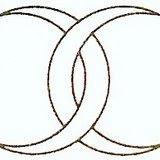
Blogroll Me
Thanks to my friend Bonie, I know what I am going to replace my little TV with once the HD- TV replaces my analogue. No chance of reprogramming me now! I am not sorry to see regular scheduled programming go. They will have to give me a free TV in order for me to sign up for the future programming. Guess I am just gonna be out of the loop!
I got this from Wikipedia!
Advantages of HDTV expressed in non-technical terms
High-definition television (HDTV) yields a better-quality image than standard television does, because it has a greater number of lines of resolution. The visual information is some 2-5 times sharper because the gaps between the scan lines are narrower or invisible to the naked eye. The larger the size of the television the HD picture is viewed on, the greater the improvement in picture quality. On smaller televisions there may be no noticeable improvement in picture quality.
The lower-case "i" appended to the numbers denotes interlaced; the lower-case "p" denotes progressive. With the interlaced scanning method, the 1,080 lines of resolution are divided into pairs. The first 540 alternate lines are painted on a frame and then the second 540 lines are painted on a second frame. The progressive scanning method simultaneously displays all 1,080 lines on every frame, requiring a greater bandwidth.
[edit] Disadvantages of HDTV expressed in non-technical terms
[edit] Limitations to picture quality
In practice, the best possible HD quality is not usually achieved. The main problem is that many operators do not follow HDTV specifications fully. They may use lower bitrates or smaller resolution to pack more channels within the limited bandwidth, reducing video quality.[23] The operators may use a format that is different from the original programming, introducing artifacts in the process of re-encoding.[24] Also, image quality may be lost if the television is not properly connected to the input device or not properly configured for the input's optimal performance, which may be difficult because of customer confusion regarding connections. Also, some HDTV broadcasters intentionally distort the aspect ratio of program material for convenience, for example, when horizontally stretching the 4:3 source used for the standard-definition version of their channel up to 16:9 for the HDTV version of their channel, resulting in an image where objects are too "short and fat". The proper approach (properly obtaining a true 16:9 version of the source material instead of horizontally-stretching the 4:3 version) is not always used. This aspect-skewing "shortcut to 16:9" has been observed on several so-called "16:9" major HDTV cable channels in the USA as recently as June 2009 with the FOOD Network HD channel and HGTV HD channel being two examples.
[edit] Connector cables
Appropriate cabling must be used. Either HDMI, DVI, component video or VGA cables must be used to support a high-definition signal. For instance, if composite or S-Video cables are used for connections from a cable box or satellite dish then only an SDTV quality picture will be seen. Component video cables are RCA cables that are color coded for proper signal. They consist of three video cables (green, blue, and red), two audio cables (red and white), and they carry an analog signal. HDMI cables carry all the video and audio in one cable using a digital signal.
[edit] Signal quality
As high-definition video broadcasts are digital, the disadvantages of digital video broadcasting also apply. For example, digital video responds differently from analog video when subject to interference. Unlike in analog television broadcasting, in which interference causes only gradual image and sound degradation, interference in a digital television broadcast will freeze, skip, or display "garbage" information. This is often called the "cliff effect" where one either gets a perfect picture or none at all. The quality of the antenna is especially important, especially in DVB-T which is extremely sensitive to impulse noise from electrical appliances or automobiles and may require the installation of fully shielded antenna cables in order to successfully receive a picture.
Early ATSC receivers were very sensitive to dynamic multipath interference. Third and fourth generation receivers, in place since 2001, have made ATSC as resistant to multipath as DVB.
[edit] Aspect ratio
In order to view HDTV broadcasts, viewers may have to upgrade their TVs at some expense. Adding a new aspect ratio makes for consumer confusion if a display is capable of more than one ratio but must be switched to the correct one by the user. Traditional standard definition programs and feature films (mostly movies from before 1953) originally filmed in the standard 4:3 ratio, when displayed correctly on an HDTV monitor, will have empty display areas to the left and right of the image. Many consumers aren't satisfied with this unused display area and choose instead to distort their standard definition shows by stretching them horizontally to fill the screen, giving everything the appearance of being too wide or not tall enough. Alternatively, viewers may choose to zoom the image which removes content that was on the top and bottom of the original TV show.[25]
[edit] Confusion about formats
Another disadvantage of HDTV compared to traditional television has been consumer confusion stemming from the different standards and resolutions, such as 1080i, 1080p, and 720p. Complicating the matter have been the changes in television connections from component video, to DVI, then to HDMI. Finally, the HD DVD vs. Blu-ray Disc high definition storage format war for a period of time created confusion for consumers. This particular format war was "settled" with Blu-ray emerging as the victorious standard when Toshiba withdrew from the HD DVD format in February 2008, and then the HD DVD Promotion Group was dissolved on March 28, 2008.







1 comment:
Hi,
I came across your blog http://conchacastaneda.blogspot.com/and think it looks great. I thought it would be good for both of us to do a content link exchange. If you are interested please mail me at davidwilsen@gmail.com.
Thanks,
David
Post a Comment